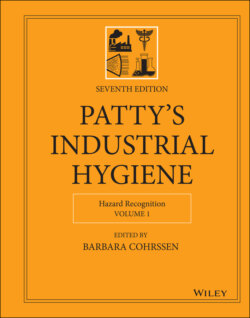Читать книгу Patty's Industrial Hygiene, Hazard Recognition - Группа авторов - Страница 75
2 THE RELATIONSHIP BETWEEN FATALITIES AND UNSAFE DESIGN
ОглавлениеFor the practice of OSH, a major concern remains the number of workplace fatalities each year. Over the years, incident rates have been on a decline, however, fatality rates have flattened and slightly increased. Bureau of Labor Statistics (2) data indicate 5190 workers died from occupational injuries in 2016, a 7% increase over 2015, and the highest since 2008.
Studies indicate a causal relationship may exist between workplace fatalities and unsafe workplace designs. In Australia, a 2014 study examined the relationship between occupational fatalities and unsafe design of machinery, equipment, and facilities over a six‐year period. The study found that 12% of the fatalities were directly caused by unsafe design or design‐related factors, while 24% were possibly caused by design‐related factors (3). Fatalities and serious incidents (FSIs) that occur in the construction industry can be directly linked to the level of prevention incorporated into the planning and design of the project (4). According to studies of fatalities in construction, over 40% were connected to the design‐related factors (5). For occupational FSIs to be effectively and consistently reduced, prevention and safety must be designed into workplace systems and methods. This requires the use of risk avoidance, elimination, and substitution, the most effective risk treatment options in the PtD hierarchy of controls, to be incorporated into design and redesign efforts. For future FSIs to be avoided or reduced, the workplace systems and conditions that present hazards and risks that make FSIs possible must be designed out.
